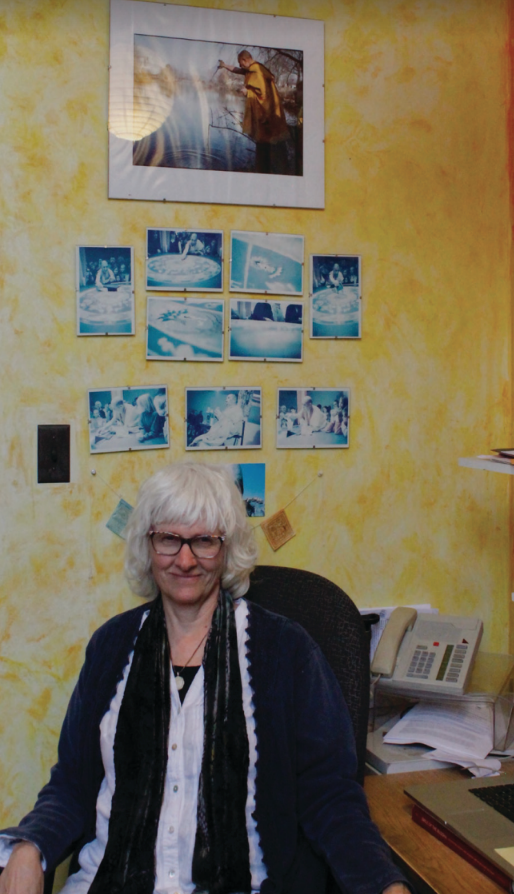By: Max Lorber, Arts and Culture Editor
Before serving as the Director of the USM Art Gallery, Carolyn Eyler was in the South bucking the confinements of conservative philosophy. As a curator for the William King Regional Art Center in Abington, Virginia, the last show she put together was titled “Bestial Angels”. The exhibit was funded by a Christian donor who, upon discovering the exhibit featured the feminist performance artist Carolee Schneemann tongue kissing a cat, promptly pulled out. The act was a representation of a myth about the magical breath of a lion—he did not want any part of it.
Eyler recounted her efforts to describe the exhibit to the museum’s board of directors, who were mostly lawyers and oil tycoons from neighboring West Virginia.
“I remember coming to this piece and saying ‘it’s kinky, what can I say?’” Eyler said. “I realized I couldn’t continue delving into the kind of art I was interested in without going somewhere else.”
In the mid-’90s, Bard started their Center for Curatorial Studies program. Eyler, a trained artist herself, said this program was her ticket out of Virginia; an opportunity to move on to a more liberal environment, where she could put together the kind of exhibits that were meaningful to her. After earning a master’s degree, she found a home at USM Art Gallery, where she has served as Director since 1998.
“With my training as an artist, I am approaching curation from that creative framework,” Eyler said. “That’s why I have been comfortable in the art department.”
Eyler said she was familiar with being an educator before running the Art Gallery. After earning a BA in sculpture from Virginia Commonwealth University, she taught art classes in special education and at an art camp, before getting hired at the Virginia Museum in Richmond as an “Art Mobile” curator. She would transport a trailer furnished with professional art around the state of Virginia, parking at schools and libraries, and conduct workshops and lectures.
“I tell students now, if you have a certain will and energy and ambition, and apply yourself, I think generally along the way you will find things that feed into that,” Eyler said while discussing the various titles she held before landing at USM.
When she began working as Director for the Art Gallery, Eyler said the systems in place felt disjointed. She said a panel of individuals from the artistic community in the Portland-Gorham area used to help advise the Art Gallery, but they were difficult to get in touch with, and were not directly involved with USM. Organizing anything proved to be an arduous process. Eyler said she got support from the school administration and the Art Department in helping to make the systems for running the gallery more efficient.
Now the heads of the Art Department oversee her work at the gallery and work with her to bring in artist lecturers and artists-in-residence to USM. Eyler said this helps the USM Art Department and the Art Gallery host a variety of different styles of artists and lecturers, which makes it a much more vibrant learning environment.
While possessing her own style and taste, Eyler said she realized her new position did not necessarily afford her carte blanche to exclusively organize the exhibits she wants. Understanding that the Art Gallery was meant as a generalist space with an emphasis on education, she has worked to include many different styles of art.
But that doesn’t mean things can’t get strange once in a while. On March 12th, the USM Art Gallery is hosting a viewing of Ólöf Nordal, Gunnar Karlsson and the composer Thuridur Jónsdóttir’s “Lusus Naturae”, an eerie ride through the Icelandic artist’s animated interpretation of a human’s relationship with nature, complete with a live orchestra.
Eyler employs several work-study students and student interns, who help to organize and set up these exhibits. She claims these students are crucial to helping run the gallery. They also learn how a professional art gallery is run, which can prove useful in their future careers. Eyler also taught an art class titled “Looking Into Art”, where students go on field trips to different museums, studios, and galleries for inspiration, then create their own visual projects.
“I really love being in an educational environment,” she said. “Nothing like you guys to keep me on my toes.”

